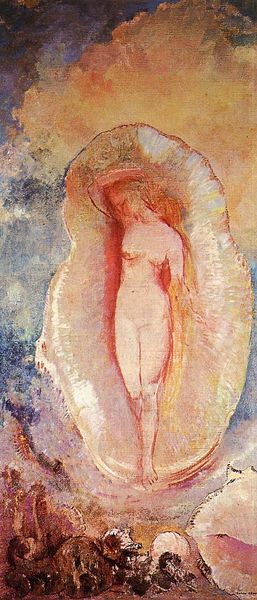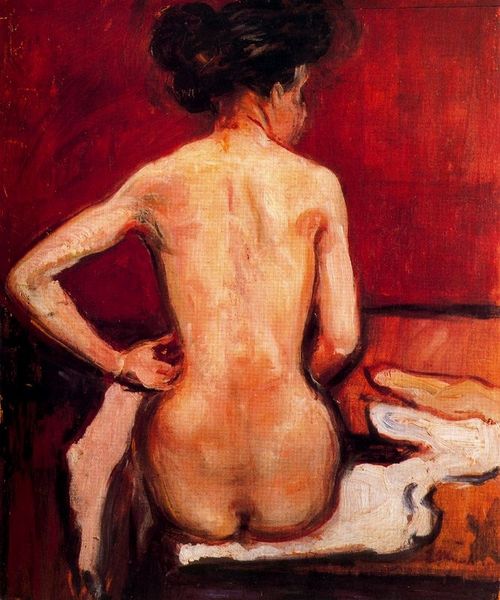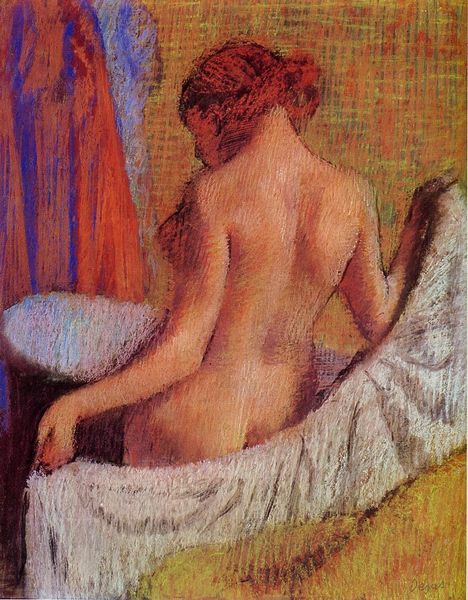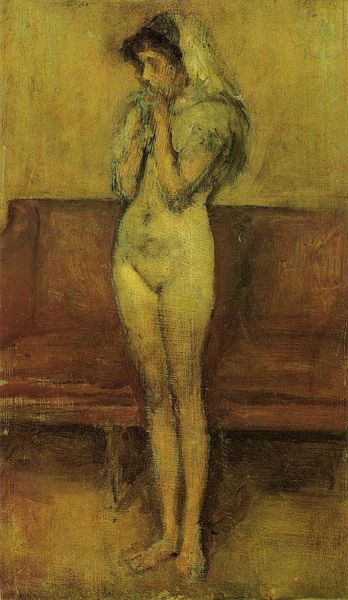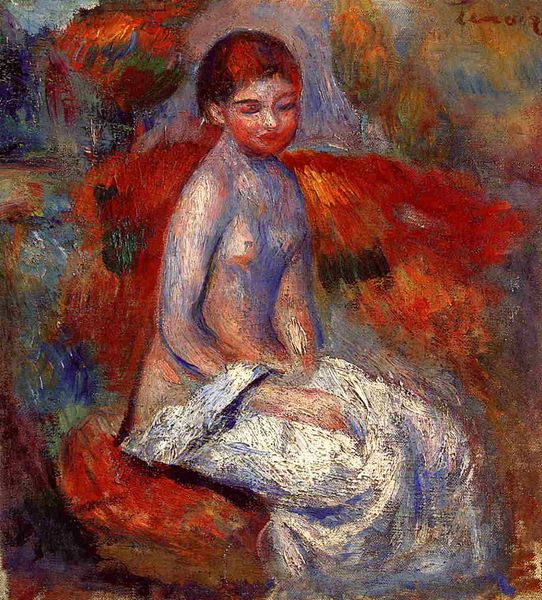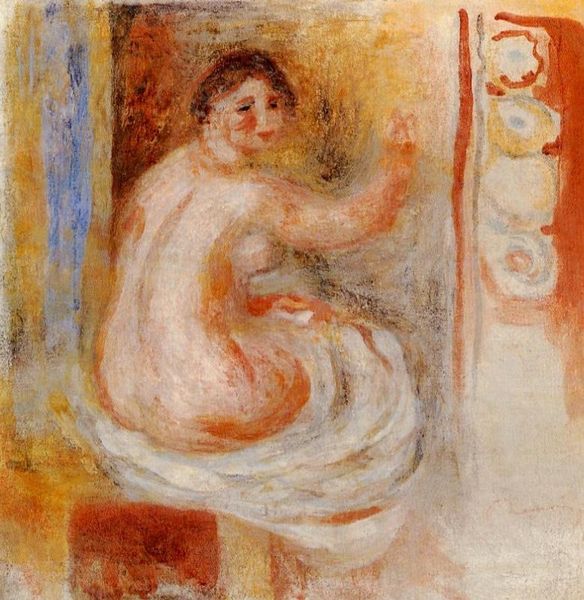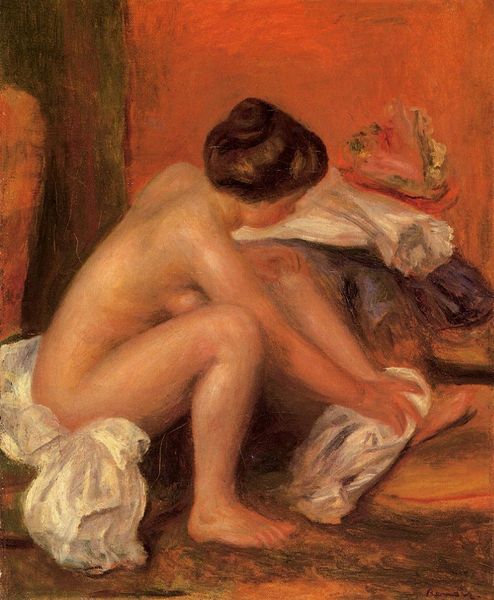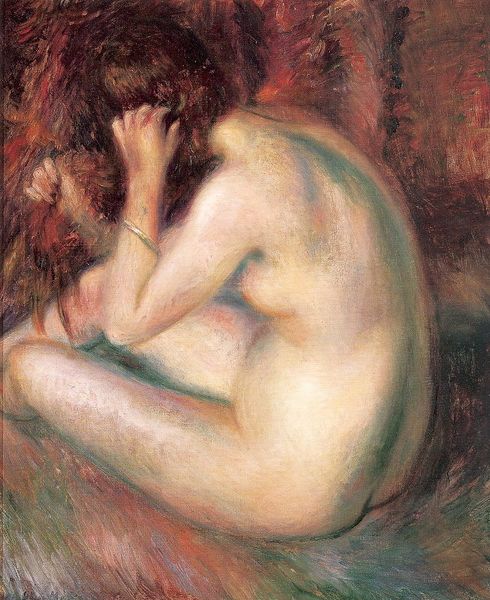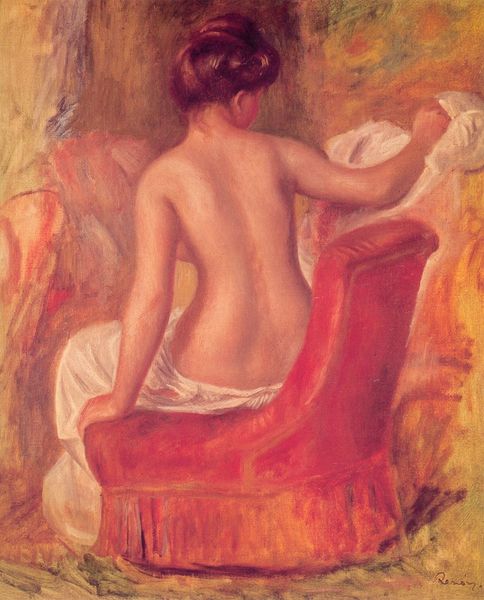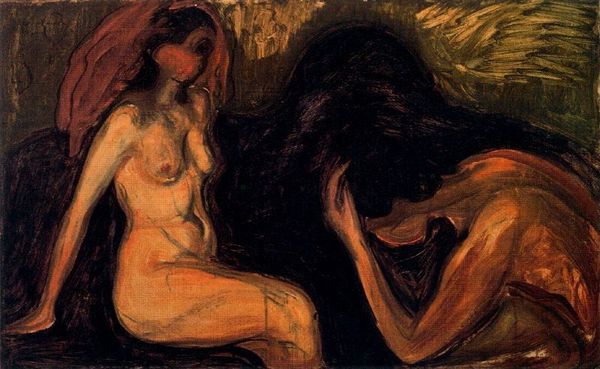
Dimensions: 80.5 x 60.5 cm
Copyright: Public domain
Editor: This is "Paris Nude," painted in 1896 by Edvard Munch. It’s an oil painting, quite raw in its presentation of the female form. The red background feels intense. I’m curious about what you make of its starkness and that strange mix of vulnerability and defiance in the figure’s pose. What do you see in this piece? Curator: Defiance is a great word for it! Munch is, in his way, like a thunderstorm caught on canvas, isn't he? Forget gentle breezes; his colors shout! It's the psychological truth he's after, and I suspect that the redness you're drawn to is key – a smoldering emotion barely contained. What's that blanket hiding…or revealing? Is she shielding herself or presenting herself? Maybe the two are inseparable? Editor: That makes me think about the tension he creates. The pose feels both self-conscious and strangely confident. Why choose such a direct approach to the nude form? Curator: Munch was trying to explore the raw nerve endings of human experience – love, death, anxiety. Perhaps this nude is a stripping away of societal facades. Look at the way the paint is applied—loose, almost violently expressive. The redness is less a colour and more a feeling, like anger or feverish desire. What story does the face, turned away, tell you? Editor: Hmm, that averted gaze adds another layer of mystery, right? It hints at inner turmoil but also self-possession. Curator: Precisely! Maybe it's less about a beautiful body and more about a turbulent mind trying to find a space for itself. Editor: So, it’s not just the surface; it’s the storm beneath. Thanks. I definitely see it differently now! Curator: The pleasure is all mine. Art is a looking glass for our feelings, you know; sometimes a dark one, and a storm of paint is the best reflection.
Comments
No comments
Be the first to comment and join the conversation on the ultimate creative platform.
